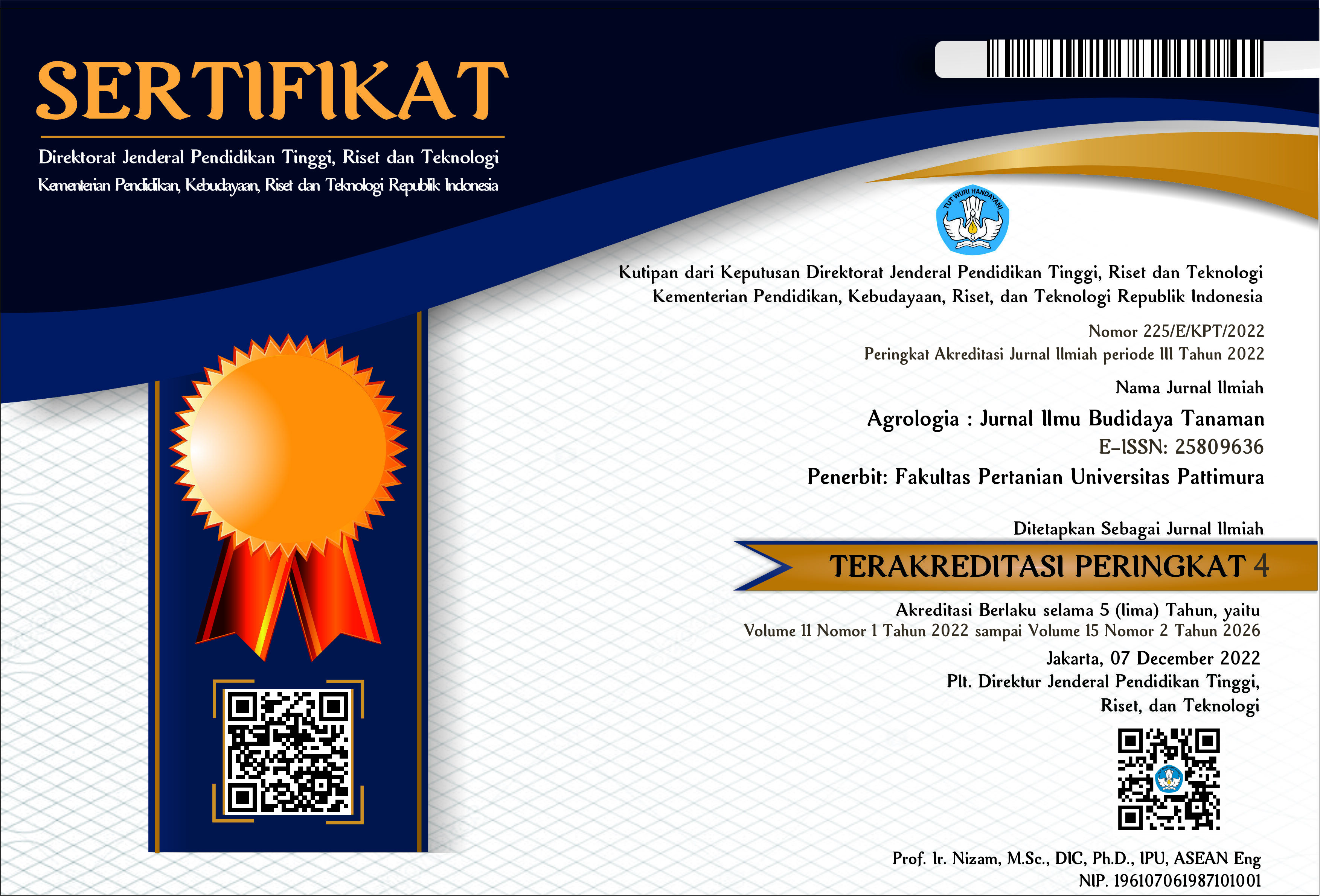Studi Keragaman Komunitas Gulma pada Areal Pertanaman Rambutan (Nephelium Lappaceum) Di Desa Hitu dan Desa Allang Kabupaten Maluku Tengah
Abstract
The rambutan plant (Nephelium lappaceum) is a tropical fruit of the Sapindaceae family that is loved by the Indonesian people and is widely found in various regions, including Hitu Village and Allang Village, Central Maluku Regency. Rambutan production in this area tends to decrease every year, one of which is due to weed disturbances that inhibit plant growth. This study aims to identify the types of weeds that grow in the rambutan planting area in Hitu Village and Allang Village and determine the most dominant weed types in each location with different altitude conditions. The research was carried out using a vegetation survey method using sample plots measuring 1 m × 1 m under six rambutan trees in two different areas, so that a total of 12 weed samples were obtained. Data collected through field observation includes quantitative and qualitative data, both primary and secondary. The results of the study showed that there were 27 types of weeds in the entire rambutan planting area, namely 15 types in Hitu Village and 13 types in Allang Village. The dominant weed type in Hitu Village is Vigna luteola with an SDR value of 18.56%, while in Allang Village the dominant weed is Miconia crenata (Cahs) Michelang with an SDR value of 28.89%.
Downloads
Copyright (c) 2025 Laura Tambung, Leonard Madubun, Vilma Laurien Tanasale, Nureny Goo

This work is licensed under a Creative Commons Attribution-NonCommercial-ShareAlike 4.0 International License.
License and Copyright Agreement
In submitting the manuscript to the journal, the authors certify that:
- They are authorized by their co-authors to enter into these arrangements.
- The work described has not been formally published before, except in the form of an abstract or as part of a published lecture, review, thesis, or overlay journal. Please also carefully read Agrologia : Jurnal Ilmu Budidaya Tanaman Posting Your Article Policy at https://ojs.unpatti.ac.id/index.php/agrologia/about
- That it is not under consideration for publication elsewhere,
- That its publication has been approved by all the author(s) and by the responsible authorities – tacitly or explicitly – of the institutes where the work has been carried out.
- They secure the right to reproduce any material that has already been published or copyrighted elsewhere.
- They agree to the following license and copyright agreement.
Copyright
Authors who publish with Agrologia : Jurnal Ilmu Budidaya Tanaman agree to the following terms:
- Authors retain copyright and grant the journal right of first publication with the work simultaneously licensed under a Creative Commons Attribution License (CC BY-NC-SA 4.0) that allows others to share the work with an acknowledgment of the work's authorship and initial publication in this journal.
- Authors are able to enter into separate, additional contractual arrangements for the non-exclusive distribution of the journal's published version of the work (e.g., post it to an institutional repository or publish it in a book), with an acknowledgment of its initial publication in this journal.
- Authors are permitted and encouraged to post their work online (e.g., in institutional repositories or on their website) prior to and during the submission process, as it can lead to productive exchanges, as well as earlier and greater citation of published work.




.png)
